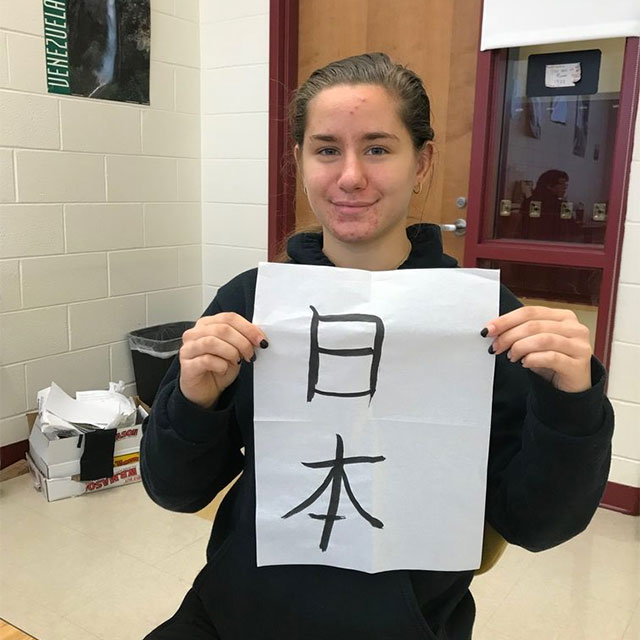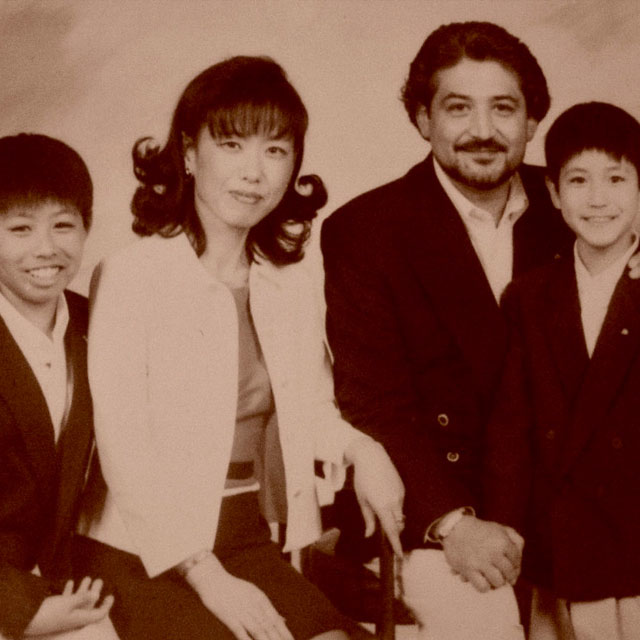“Dear Diary Boy” – Kumiko Makihara

“Dear Diary Boy” – Kumiko Makihara
In her memoir “Dear Diary Boy”, author Kumiko Makihara recounts the six years when her son Taro spent at an elite private elementary school in Japan—a work she calls “an expression of love, remorse, and gratitude.” The curious title comes from a cartoon character, the Diary Boy who feeds on letters in a diary – a character that Makihara’s mother created to entice her grandson to write in his diary. The book, in which Makihara weaves in some of Taro’s diary entries, not only offers an insightful glimpse into an elite Japanese institution, but also into Makihara’s struggles coping with the challenges of navigating through its rigid environment.
New Beginning as a Single Mother
In 2002, three years after adopting a boy from Kazakhstan, Makihara left a troubled marriage to an American in Beijing, and a life as a journalist, to move back to Japan. She and her adopted son Yataro (Taro for short) could then be close to her parents who could also assist them financially. When Taro approached an elementary school age, she pondered what kind of education she wanted to give him. Hearing that the academic rigor and teacher morale were in decline in the Japanese public schools, she decided to have her son apply to her father’s alma mater, a prestigious private institution she calls “The School”).
The deck was stacked against her in many ways: a divorced single mother of an adopted and mixed-race child (Taro’s birth mother was a Kazakh and birth father likely a Russian) – both of which are still often viewed in a negative light in Japan. Moreover, she was older than most of the other parents of children Taro’s age, and having spent half of her childhood overseas, she often felt not fully Japanese. (She wrote this book in English.) The unspoken Japanese code of “acquiesce and blend in” that her mother taught her was often hard for her.
First Challenge – “Ojuken”
According to Makihara, only around one percent of Japanese primary school children attend private schools. The application process is grueling: both the children and parents go through competitive screening processes and the applicants start exam preparations early. Exams typically include written, art, athletic, and behavioral components, plus an interview. The written component is created to test the children’s language and math skills; and the physical fitness tests not only screen the children’s hand-eye coordination and agility, but also examines how well they can follow instructions. The art component might include origami to test fine motor skills and there is also a separate session to test the children’s behavioral and social skills: handing a pair of scissors to the other person with the blades pointing at him/her is not acceptable and neither is not sharing the provided tools with the other children, because that behavior signals that the children might not be taught good manners at home and the child might not be a good team player.
In order to master the various skills to pass these exams, parents send the aspiring little applicants to a cram school where they learn not only the ‘academics’, but also the athletic movements such as rhythmical skipping & somersaults and useful life skills such as how to fold clothes, separate garbage, hang laundry, and tie a bow. There is also plenty of homework, so applicants can perfect those skills at home. Parents learn the correct protocol for how to behave at the prospective school’s open house – remember to bring your own slippers, don’t bring a big bag, and dress sensibly so as not to stand out, to list a few. Throughout the exam process, Makihara kept noticing Taro’s shortcomings with dread and despair; and she felt that she was under as much scrutiny and judgment as her son.
Starting at The School
Despite the author’s doubts and trepidations, Taro was accepted into The School as one of 112 first graders, one of the lucky one in eight applicants who was accepted. But as intense as the application process was, they were barely getting started on their journey. Makihara writes: “A relief and a thrill. But the excitement quickly transformed into a nagging sense of worry. What had I done? “
In April of 2005, Taro became a proud first grader, dressed in a formal school uniform and carrying an oversized black randoseru on his back. After getting through all the paperwork and readying Taro with necessary supplies, the first order of business for Makihara was to help him get used to his commute to The School. Children come to The School from many parts of the greater Tokyo area, typically using public transportation. For Taro to get to school, he would leave home by 6:30 AM and travel 90 minutes by taking two trains and a bus. The School had a system in place for the children to ease into their commuting routine. The parents had to accompany the children to the classroom and pick them up at the end of the day during their first week, but parents’ drop off and pick up location became farther away by the week. The idea was that the children would learn to commute to school entirely on their own by the end of the fourth week.
Keeping Pace at The School
The School’s curriculum was rigorous. From the start, the students took seven subjects at school: Japanese, Math, English, Integrated Studies, P.E., Art, and Music. The students at The School would be spending a progressively longer amount on homework over the years, set at roughly 20 minutes times the grade level, and they were also busy with after school classes. As early as in second grade, after Makihara and Taro moved to a closer location to The School, Taro was taking soccer, abacus, piano, English, swimming and Judo six days a week (costing Makihara roughly $400 a month).
Makihara writes that in the 1980’s, the Japanese government sought to reduce class hours for the school children nation-wide, in order to ease stress on them and their family. The School never adopted such a policy, however, and continued to push their demanding curriculum. Even during the seasonal vacations, students were busy working on homework assignments—for example, working on crafts, memorizing ancient poems, completing math work sheets and book journals. This was intended to ensure that students did not lose their academic momentum. Writing a diary was a constant assignment throughout the elementary school years.
How Was Taro Doing at The School?
From the beginning, Taro thrived socially at The School. Even when singled out as a “gaijin” or intimidated by the rougher kids, Taro learned how to navigate dangers and won over even some of the less friendly types with his good-natured personality. He loved school so much that he would arrive at The School even before the gates opened in the morning. He also got great pleasure out of various school-events like their dodgeball tournament and overnight excursion trips.
Keeping up with the rigorous academic demands was more of a challenge, however. As early as the end of second grade, Makihara started worrying about Taro’s learning abilities. Taro was soon diagnosed with attention deficit/hyperactivity disorder (ADHD) and this posed an enormous challenge for both Taro and his mother when tackling the school’s heavy work load.
Hardships and Dark Moments
Mothers of The School were especially involved in the children’s education. Few of them worked, even if they had college or advanced degrees. Makihara adapted accordingly. She quit her demanding job and focused more on motherhood. This was probably necessary for The School did not offer any remedial instructions when the students fell behind in class. The responsibility therefore fell heavily on Makihara’s shoulders to fill in the gap.
Homework battles became quite heated as Taro advanced in grades. The confrontation between mother and son was sometimes physical and often escalated into shouting matches, food deprivation, threats, and emotional melt-downs for both. It is painful to read about their struggles, especially the dark moments where Makihara couldn’t contain her temper. Most mothers have an overwhelming desire to help their children succeed but her story also teaches us troubling consequences of pursuing a misguided sense of success.
The excess of The School’s competitive and exacting environment is most acutely illustrated by a shocking event that Taro experienced in fifth grade. One day when the writing teacher discovered that Taro’s penmanship had not improved to his satisfaction and that Taro’s notebook therefore was ‘messy’, he became enraged. The teacher grabbed Taro by the neck, shoved him against the wall, and hit him in the face multiple times until his nose bled. The story spread quickly among other mothers, but only one mother stood up against The School on their behalf. Given the seniority and qualifications of this teacher, other mothers were reluctant to complain about his behavior. Even Taro’s homeroom teacher stayed quiet, out of fear of this abusive teacher’s place in the faculty hierarchy.
Finishing Line
Despite this distressing experience, Makihara and Taro soldiered on. By the sixth-grade, Taro was deeply into history. He became interested in Japan’s human torpedoes of World War II and decided to study the subject for his sixth-grade graduation thesis. Taro and his mother travelled afar and spent time visiting museums and interviewing people. His swimming classes readied him for a required long-distance swim in the Pacific Ocean in six grade – the long-standing tradition at The School. Taro described this experience in his diary on July 21, 2010: “The feeling when I got out was amazing, I can’t explain it. I can’t wait to tell my mom.”
Afterthoughts
Makihara’s assessment on She recognizes that The School’s strong curriculum helped Taro to gain a solid academic base. The School is measured. At the same time, however, she observes that The School often failed to recognize children’s efforts, and often lacked necessary flexibility. During a school-sponsored homestay experience in Australia, and after Taro finally moved to the US in middle school, he repeatedly expressed his astonishment at how children in these other countries were allowed to make mistakes.
As a window into elite private elementary education in Japan, this book is fascinating. The statistics Makihara cites are informative, as are the comparisons she draws between Taro’s experience in Japan and in the US. I also admired Makihara’s willingness to share her darkest moments with real honesty. One concludes that perhaps the most important quality that parents can hope for in children is resilience. If they gain that, they gain a better chance to survive hardships and succeed – at whatever the child defines as success.
As Makihara described her conversation with Taro reminiscing his elementary school days at the end of the book, the constant image is that of a deep and loving bond between the two.
This book is Makihara’s love letter to Taro. It is also perhaps an act of atonement, for the hardship she brought into Taro’s childhood. Throughout Taro’s elementary school years, she devoted her life and her energy, for his sake, as many mothers do, despite often feeling inadequate—as many mothers also feel. If he reads this book Taro will understand how love is often most deeply expressed in the pain expressed in of wanting a child to succeed.
国立音楽大学および大学院修了。フリーランス司法通訳・翻訳者。ニューヨーク、パリ、東京を経て、1997年より首都ワシントン郊外に在住。夫と息子三人の五人家族。


